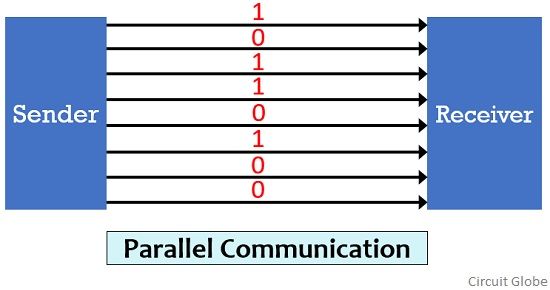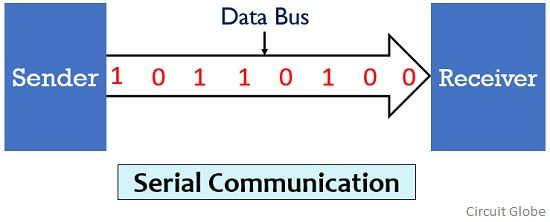The crucial difference between serial and parallel communication is that in serial communication a single communication link is used to transfer the data from an end to another. As against in parallel communication, multiple parallel links are used that transmits each bit of data simultaneously.
Due to only a single communication link serial communication is comparatively more cost effective than parallel communication. In this article we will discuss some other factors that differentiates the two.
Content: Serial Vs Parallel Communication
Comparison Chart
| Basis for Comparison | Serial Communication | Parallel Communication |
|---|---|---|
| Data transmission speed | Slow | Comparatively fast |
| Number of communication link used | Single | Multiple |
| Number of transmitted bit/clock cycle | only one bit. | n number of link will carry n bits. |
| Cost | Low | High |
| Crosstalk | Not present | Present |
| System Up-gradation | Easy | Quite difficult |
| Mode of transmission | Full duplex | Half duplex |
| Suitable for | Long distance | Short distance |
| High frequency operation | More efficient | Less efficient |
Definition of Serial Communication
In serial communication the data bits are transmitted serially over a common communication link one after the other. Basically it does not allow simultaneous transmission of data because only a single channel is utilized. Thereby allowing sequential transfer rather than simultaneous transfer.
The figure below shows the serial data transmission:
It is highly suitable for long distance signal transmission as only a single wire or bus is used. So, it can be connected between two points that are separated at a large distance with respect to each other. But as only a single data bit is transmitted per clock pulse thus the transmission of data is a quiet time taking process.
Definition of Parallel Communication
In parallel communication the various data bits are simultaneously transmitted using multiple communication links between sender and receiver. Here, despite using a single channel between sender and receiver, various links are used and each bit of data is transmitted separately over all the communication link.
The figure below shows the transmission of 8 byte data using parallel communication technique:
Here, as we can see that for the transmission of 8-bit of data, 8 separate communication links are utilized. And so rather following a sequential data transmission, simultaneous transmission of data is allowed. This leads to a faster communication between the sender and receiver.
But for connecting multiple lines between sender and receiver multiple connecting unit are to be present between a pair of sender and receiver. And this is the reason why parallel communication is not suitable for long distance transmission, because connecting multiple lines to large distances is very difficult and expensive.
Key Differences Between Serial and Parallel Communication
- Due to the presence of single communication link the speed of data transmission is slow. While multiple links in case of parallel communication allows data transmission at comparatively faster rate.
- Whenever there exists a need for system up-gradation then upgrading a system that uses serial communication is quite an easy task as compared to upgrading a parallel communication system.
- In serial communication, the all data bits are transmitted over a common channel thus proper spacing is required to be maintained in order to avoid interference. While in parallel communication, the utilization of multiple link reduces the chances of interference between the transmitted bits.
- Serial communication supports higher bandwidth while parallel communication supports comparatively lower bandwidth.
- Serial communication is efficient for high frequency operation. However, parallel communication shows its suitability more in case of low frequency operations.
- Due to existence of single link, the problem of crosstalk is not present in serial communication. But multiple links increase the chances of crosstalk in parallel communication.
- Serial communication is suitable for long distance transmission of data as against parallel communication is suitable for short distance transmission of data.
Conclusion
So it is clear that utilizing multiple lines for data transmission in case of parallel communication is advantageous as it offers faster data transmission. But as the same time it is disadvantageous when considered in case of cost and transmission distance.


Awesome